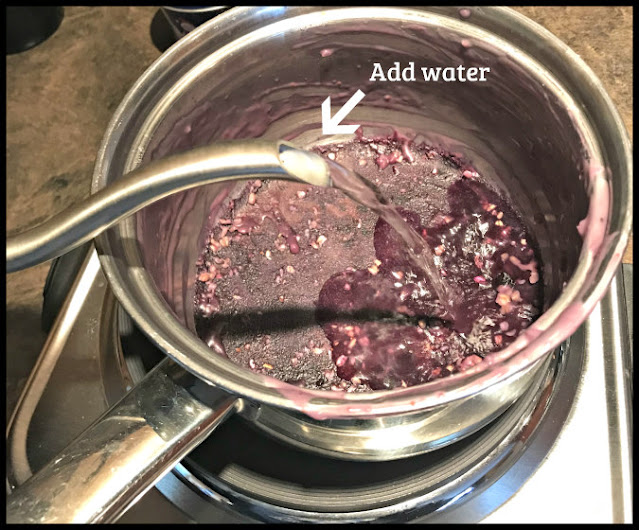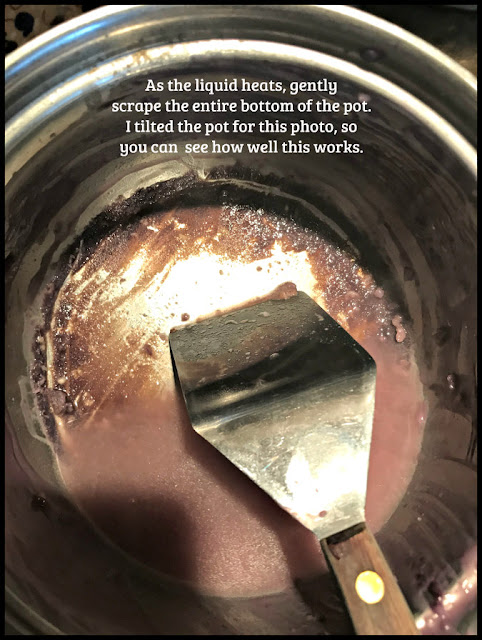Before you soak or scrub, try this trick first!
I've scorched a lot of pots and pans, lately. While remodeling our kitchen, I've been cooking meals using a single burner hotplate. This little burner has been invaluable, as far as being able to boil, simmer, saute, and warm up food, but the temperature is tough to regulate.
Pans can scorch or burn even on the best of appliances, and this can happen quickly. You get distracted and turn away from the stove to do something else, turn up the heat too high, or simply forget to stir. Suddenly, whatever you have been heating in a pan scorches and burn.
Hopefully, you can salvage whatever you were cooking, but the pan will be a mess. However, before you reach for caustic cleansers and tough scrubbing pads or leave it overnight to soak, give this trick I've learned a try. I'm not sure if it will work in every case, but so far it's worked for me.
One day, after badly scorching a pan, I thought, "If deglazing works to loosen food particles to make a sauce, would it help me clean this pan?"
Accomplished cooks know what it means to "deglaze" a pan, but it's really just a fancy word for a very simple task. Here's how The Spruce Eats defines the term:.
"Deglazing a pan involves adding liquid, such as stock or wine, to a pan to loosen and dissolve food particles that are stuck to the bottom after cooking or searing. The cooked food particles, known as fond, are the source of immense flavor. The flavorful mixture produced by deglazing can be used to make a sauce."
I tried deglazing the scorched pan I mentioned above––and it worked like a charm. In fact, this trick has been successful every time I've tried it since.
I've included some photos here to illustrate the technique. I scorched the pot in these photos when I was cooking oatmeal with some water, blueberries, and a dab of peanut butter. (If you've never eaten this, it is a yummy, healthy breakfast!)
Method
1. Empty loose contents from the pot or pan.
2. Place the pan back on a burner, over medium-low heat. Pour in enough water to submerge the scorched food.
3. Bring the water almost to a simmer, and gently scrape the bottom of the pan with a spatula. (If the pan has a nonstick coating, be sure to only use a rubber spatula or wooden spoon. Use caution doing this, so you don't scratch the pan.) Be careful not to scorch or burn the food material any further. The goal is to loosen the burned bits, not create a bigger mess!
4. Add more water and adjust the heat as necessary. When you've loosened up the scorched material, scrape it into a trash bin or garbage disposal and wash the pan.
Have you ever tried to clean a scorched pot or pan this way, or is this trick new to you? Every time I've done this, it has amazed me how well it works.
I'd love to know if you have success cleaning pots and pans this way, or if you know of any better ways to salvage a burned pan.
🤔 By the way, did you know that "a pot can correctly be called a pan, but a pan can't correctly be called a pot?" (source: Wonderopolis.org)







This is amazing! My MIL used to do something similar (she also added baking soda or salt) but I've never tried it! You've encouraged me to try because heaven knows I burn enough pans!
ReplyDeleteI know people sometimes make a paste of baking soda. I've heard the salt trick, but have also seen a warning that it might be bad for the pan. (Maybe because it is abrasive??)
DeleteI'm partly thinking that's genius, and partly thinking "now why didn't I think of that?"
ReplyDeleteI can't believe it took me this long to start doing this!
DeleteThis has been my go to for years because... well, I scorch a lot of pans because sometimes I try to keep writing while I cook!
ReplyDeleteI am a distractible cook as well!
DeleteI have indeed used this method. We put all our pans (scorched or not) in to soak before we wash them. And it almost always works a treat. The occasions when it hasn't have been really, really bad scorchings where several treatments have been required.
ReplyDeleteI have one sheet pan I ruined beyond repair that I keep for oven overflows, and just scrape the worst off of it. At least it keeps my oven clean.
DeleteWow. I simply have to share with hubby, who unscorches ours!
ReplyDeleteYay, hubby!
DeleteNo,I've never heard of this method. I've soaked pans in hot water but that's not the same thing (as you point out). It does sound logical and I intend to try it "next time".
ReplyDeleteI hope it works for you!
Delete